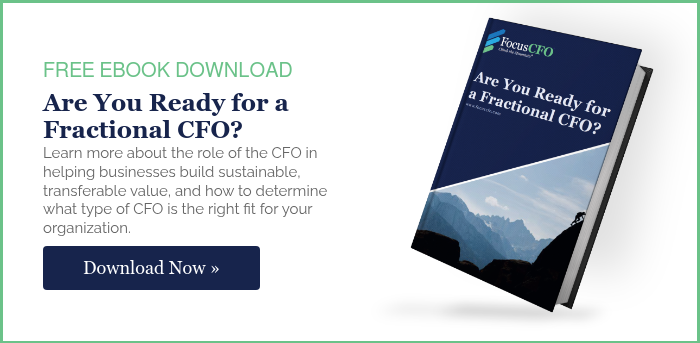Almost two years ago, I became a Certified Exit Planning Advisor “CEPA” because in my role as an Area President for Focus CFO, I am constantly talking to baby boomers who own businesses that are thinking of selling but have no idea of how to start the process and what options are available to them. I have found that most business owners are so engrossed in their business that they don’t think about selling until six months before they want to exit.
A survey was conducted by the Exit Planning Institute partnering with Grant Thorton, PNC, and the Ohio Employee Ownership Center at Kent State University. This “State of Owner Readiness “survey found that 75% of owners who sold their businesses had “sellers’ remorse” because they felt they were underpaid for their business and were not prepared for the emotional impact of selling their business. Seller’s remorse can be rectified by beginning to plan for a transaction 3-5 years before an owner actually wants to exit.
Life After Exit
An exit plan not only deals with selling the business, but equally focuses on the personal financial plan and the personal life after the transaction. The plan addresses the issues of being financially secure after the sale and having a life plan to ensure personal happiness after the sale.
One of the most significant lessons I learned in my training was that the most neglected part of selling is planning “Life after Exit”. Because entrepreneurs spend their life managing the highs and lows of everyday business, there is an emotional void in their life after they sell their business.
Exit by the Numbers
A typical exit plan will determine an “Attractiveness Score” and a “Readiness Score”. These scores reveal the areas of improvement needed for a successful transition. The attractiveness score, as it indicates, shows what is needed to make the business attractive to a buyer. The readiness score addresses the questions:
1) Is the business at its ultimate value?
2) Is the owner actually ready to sell?
3) Does the owner have an adequate financial plan?
What are the Options?
The goal is to address the improvements needed resulting from the attractiveness and readiness scores to build the company to its ultimate value over 3-5 years. An added benefit to growing a business to its ultimate value is normally an increase in profits and cash flow during the process because of the improvements. When a company has reached its ultimate value, the owner has various options including:
1) Sell the company
2) Retain the company and continue to manage it until the owner is ready to sell
3) Retain the company, let the management team operate the business, and reap the financial benefits of a successful company.
Transition Tales
I am currently working with two clients during their transition. We started planning a transition 5 years ago for the first client. The owner and I analyzed the company and determined the actions that needed to be accomplished to get the company to its ultimate value. Once we determined the company was ready and attractive, we reviewed the various exit options. The owner decided that an ESOP was the best exit strategy for him. He chose an ESOP because it provided him the best dollar value and it addressed his desire to stay involved in the company for another 3-5 years.
The second client is not as far along as the first client. We have determined the actions needed to be accomplished in the next three years to get the company to its ultimate value and are moving to that end. We are also reviewing the potential exit options.
According to the “State of Owners Readiness” survey mentioned above, 34% of respondents have no exit plan and an additional 49% have thought about selling their business but have not documented how they would accomplish it.
What I have learned from the exit planning training and from working with my clients is that it takes 3-5 years planning to have a successful transition. In addition, an owner must not only grow the business to its ultimate value, he or she must plan for their own financial security and have a plan for “Life after Exit”.
Tom Flynn is an Area President with FocusCFO based in Columbus.
Founded in 2001, FocusCFO is the leading onsite fractional CFO services provider in the Midwest and Southeast. FocusCFO works closely with small to medium sized businesses helping business owners gain control over three key financial and operational areas: increasing cash flow, reducing business risk, and creating a platform for scalable growth. This allows business owners to then realize full financial control and increased value in their businesses. For more information, visit us at focuscfo.com or follow us on LinkedIn.
855-236-0600
facebooktwitterlinkedin







